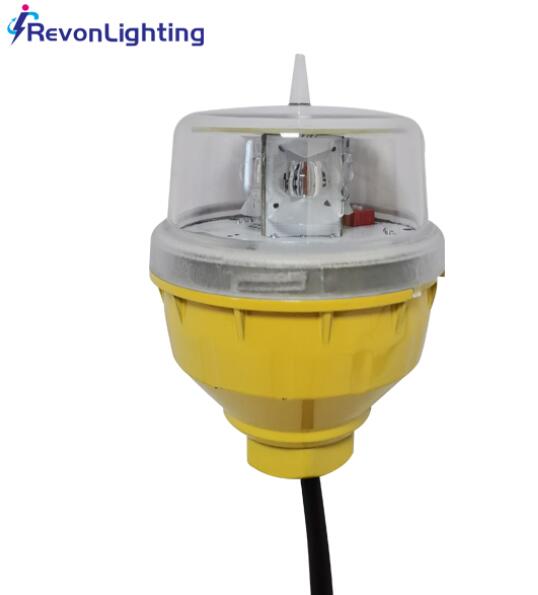Aviation safety is paramount, and integral to this are the various lighting systems installed on structures that could pose a hazard to aircraft. Among these, the L 810 obstruction light is a critical component. In this article, we delve into the L 810 obstruction light price and aircraft warning lights price, examining the factors that influence these costs and their importance in the broader context of aviation safety.
Understanding L 810 Obstruction Lights
L 810 obstruction lights are low-intensity, red lights used to mark obstacles that could potentially interfere with aircraft navigation. These lights are typically installed on structures such as communication towers, wind turbines, buildings, and other tall structures. The primary function of the L 810 light is to ensure that pilots can easily identify these obstacles, particularly during night-time operations or in low-visibility conditions.
Factors Influencing L 810 Obstruction Light Price
Technology and Features:
The L 810 obstruction light price is significantly influenced by the technology and features incorporated into the light. Modern L 810 lights often utilize LED technology, which offers several advantages over traditional incandescent bulbs, including longer life spans, lower energy consumption, and reduced maintenance costs. Additionally, features such as weather resistance, corrosion-proof materials, and advanced control systems can add to the overall price.
Compliance and Certification:
Compliance with regulatory standards and obtaining necessary certifications is another factor that affects the L 810 obstruction light price. These lights must meet stringent guidelines set by aviation authorities such as the Federal Aviation Administration (FAA) in the United States or the International Civil Aviation Organization (ICAO) globally. Ensuring compliance with these standards often involves rigorous testing and quality assurance processes, which can drive up costs.
Manufacturer and Brand:
The reputation and brand of the manufacturer also play a crucial role in determining the L 810 obstruction light price. Established manufacturers with a proven track record of reliability and quality may charge a premium for their products. In contrast, newer or lesser-known manufacturers might offer more competitive pricing to gain market share.
Installation and Maintenance:
The cost of installing and maintaining L 810 obstruction lights can also influence the overall price. Factors such as the height and accessibility of the structure, the complexity of the installation, and the need for specialized equipment or personnel can all contribute to higher costs. Additionally, ongoing maintenance to ensure the lights remain operational and compliant with regulations can add to the total expense.

Aircraft Warning Lights: A Broader Perspective
While the L 810 obstruction light is a specific type of aircraft warning light, the broader category encompasses a variety of lighting systems designed to enhance aviation safety. These lights are used to mark obstacles and indicate the presence of structures that could pose a risk to aircraft. The aircraft warning lights price is similarly influenced by a range of factors.
Types of Aircraft Warning Lights:
Aircraft warning lights come in various types, including low-intensity, medium-intensity, and high-intensity lights. Each type serves a different purpose and is used in different scenarios. Low-intensity lights, like the L 810, are used for smaller structures, while medium and high-intensity lights are used for taller structures or in areas with higher aviation activity. The type of light required directly impacts the aircraft warning lights price.
Environmental Considerations:
Environmental factors also play a significant role in determining the aircraft warning lights price. Lights designed to withstand extreme weather conditions, such as heavy rainfall, snow, or high winds, may be more expensive due to the need for robust materials and advanced engineering. Additionally, lights installed in remote or hard-to-reach locations might incur higher installation and maintenance costs.
| L 810 Obstruction Light Price | Aircraft Warning Lights Price |
| 12 | 14 |
Power Supply and Energy Efficiency:
The power supply and energy efficiency of aircraft warning lights are crucial considerations. Some lights are designed to operate on solar power, reducing the need for a continuous power supply and lowering operational costs. Energy-efficient lights, particularly those using LED technology, can also result in long-term cost savings. However, these advanced features can initially raise the aircraft warning lights price.
Integration with Monitoring Systems:
Modern aircraft warning lights often come with the capability to integrate with remote monitoring and control systems. These systems allow for real-time monitoring of the lights' operational status and can alert maintenance personnel to any issues. The inclusion of such sophisticated technology can increase the aircraft warning lights price but provides significant benefits in terms of safety and efficiency.
Balancing Cost and Safety
When considering the L 810 obstruction light price and the broader aircraft warning lights price, it is essential to strike a balance between cost and safety. Investing in high-quality, reliable lighting systems can prevent accidents and ensure compliance with regulatory standards, ultimately protecting both human lives and valuable infrastructure.
While the initial costs may seem significant, the long-term benefits of reduced maintenance, lower energy consumption, and enhanced safety far outweigh the expenses. Additionally, the potential costs of accidents or regulatory fines due to non-compliance can be substantial, making it crucial for organizations to invest wisely in their aviation safety infrastructure.
Conclusion
In conclusion, the L 810 obstruction light price and aircraft warning lights price are influenced by a myriad of factors, including technology, compliance, manufacturer reputation, installation, and maintenance requirements. Understanding these factors and their impact on costs is essential for making informed decisions when investing in aviation safety lighting systems. By prioritizing quality and compliance, organizations can ensure the safety of their operations while managing costs effectively.